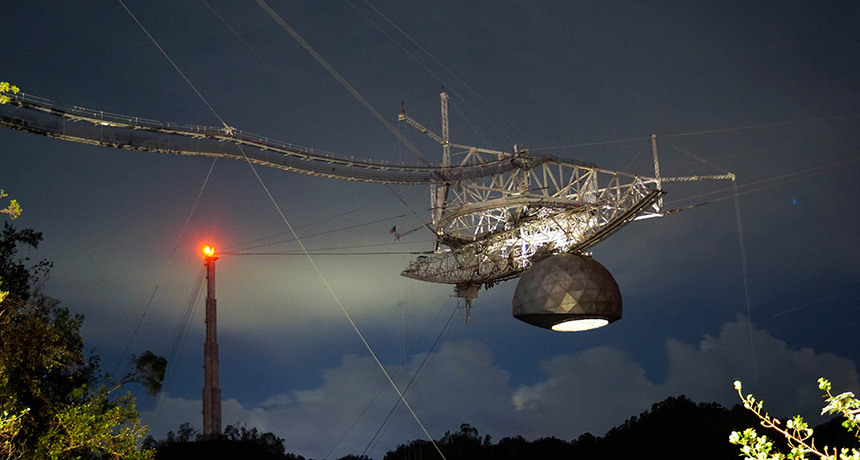
IS ANYBODY OUT THERE? The Arecibo radio telescope in Puerto Rico has been used for decades in the search for extraterrestrial intelligence (SETI) but has barely made a dent in the space to be searched, new calculations suggest.
Courtesy of the NAIC-Arecibo Observatory, an NSF facility







